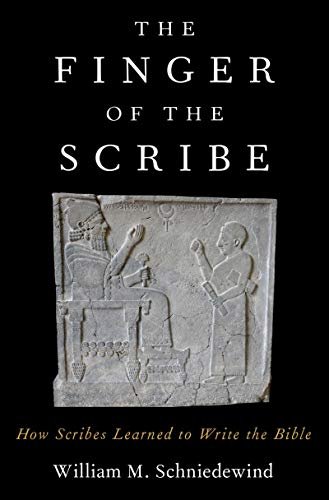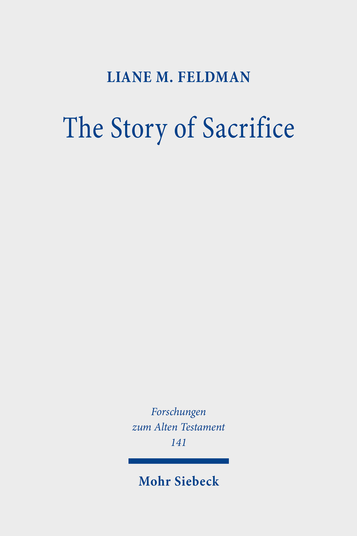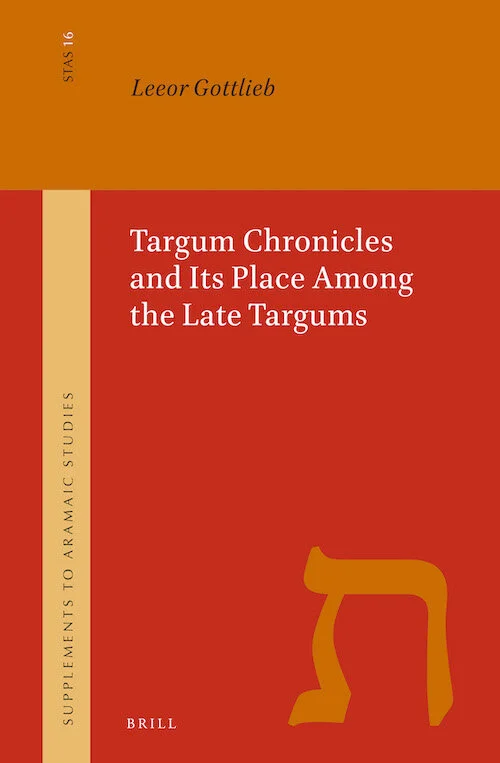What did being Roman mean after 476? And how did the notion that the Roman empire could fall shape political rhetoric in the east?
Read MoreThe Narrative Shape of Emotion in the Preaching of John Chrysostom
Weaving together studies of emotion, homiletics, and biblical exegesis, this work offers an important analysis of a recurrent theme in Chrysostom’s preaching.
Read MoreMemory in a Time of Prose
By focusing on known dynamics of memory and archaeological evidence, Pioske brings together sometimes-disparate methodological considerations to make a persuasive case for how one might engage in a historically and theoretically responsible way with the knowledge claims made in early Hebrew texts.
Read MoreEusebius and Empire: Constructing Church and Rome in the Ecclesiastical History
Corke-Webster argues that the History reflects Eusebius’ particular socio-political circumstances during the first quarter of the fourth century.
Read MoreInstitutionalized Routine Prayers at Qumran: Fact or Assumption?
[H]is project does bring to the fore the question of what these terms—as classificatory labels—might have meant to the ancient authors who used them, and, perhaps more within our control, what they mean for scholars today. If our evidence seems to resist our current attempts at classification, perhaps we need to rethink how we are classifying.
Read MoreSacred Stimulus: Jerusalem in the Visual Christianization of Rome
Noga-Banai structures her study around repeated journeys between Jerusalem and Rome from the first through fifth centuries, tracing a period from subtle to increasingly assured visual appropriation of memories and tropes, culminating in a self-assured and assertive Rome confident in its identity as the perceived historical center of the Christian movement.
Read MoreCharity in Rabbinic Judaism
“In sum, Gray is a careful and intuitive reader and teacher of rabbinic text creating cogent and compelling arguments which support her conclusions about the interplay and shift in rabbinic values and theology on charity.”
Read MoreThe Body and Desire: Gregory of Nyssa’s Ascetical Theology
Cadenhead’s thoughtful historical framing of Gregory’s familial, ecclesial, political, and monastic contexts undergirds this study and provides the context for understanding Gregory’s views on the body and desire.
Read MorePreaching Christology in the Roman Near East
Preaching Christology in the Roman Near East makes a significant contribution to both Syriac studies and late ancient studies.
Read MoreBook Note | Two Gods in Heaven: Jewish Concepts of God in Antiquity
In fact, binitarianism is even found in a number of late antique rabbinic texts as well, ultimately signaling that binitarian ideas did not necessarily serve as a form of proto-trinitarianism, remaining a part of Jewish thought even after the founding of Christianity.
Read MoreClass and Power in Roman Palestine: The Socioeconomic Setting of Judaism and Christian Origins
Anthony Keddie joins this rising movement of scholars interacting with class in a serious way, and his Class and Power in Roman Palestine: The Socioeconomic Setting of Judaism and Christian Origins stands as a welcome addition to recent provocative publications.
Read MoreBook Note | The Finger of the Scribe: How Scribes Learned to Write the Bible
“his holistic treatment of the inscriptions from Kuntillet ‘Ajrud as a set of scribal exercises that bespeaks the curricular categories known from cuneiform scribal education provides a novel empirical framework that clarifies the impact of the Mesopotamian scribal infrastructure on the early Israelite school curriculum.”
Read MoreBook Note | Land and Temple: Field Sacralization and the Agrarian Priesthood of Second Temple Judaism
While studies of the economy in Palestine during Tannaitic and Amoraic periods have a great quantity of textual evidence to draw upon, including but not limited to rabbinic sources, there is much less material available from the Second Temple period available for such an analysis. As such, Gordon’s work attempts to examine a wide range of both textual and archaeological evidence in order to flesh out our knowledge of the Jerusalem Temple economy.
Read MoreReview | The History of the Church: A New Translation
Schott’s translation requires dedication on the part of the reader who may need to use the glossary, but also renders the Greek language and rhetorical techniques Eusebius employs more visible.
Read MoreBook Note | The Story of Sacrifice
In The Story of Sacrifice, Liane M. Feldman offers an innovative reading of the pentateuchal Priestly source, taking on two of the most entrenched dichotomies in biblical studies: (1) ritual vs. narrative and (2) literature vs. history.
Read MoreReview | Apocalypse as Holy War: Divine Politics and Polemics in the Letters of Paul
Wasserman posits that Jewish apocalyptic works are better understood as myths about relationships in the divine realm. These writings do not share a common worldview (especially two age dualism) or theological system, but rather premises about the structure of the world.
Read MoreReview I The Godman and the Sea: The Empty Tomb, the Trauma of the Jews, and the Gospel of Mark
Echoing the atomsphere of Mark, Thate left his book intentionally unfinished. As a whole, The Godman and the Sea covers a wide range of scholarly debates surrounding the Markan narrative
Read MoreReview | Cicero and the Rise of Deification at Rome
By deftly combining textual analysis and historical considerations, Cole walks the readers through more than forty of Cicero’s writings (from his political orations, philosophical treatises, and personal letters) written between the late 70s and the late 40s BCE. Cole’s analysis demonstrates how Cicero introduced, experimented, and negotiated a new conceptualization of deification in Rome.
Read MoreBook Note | Targum Chronicles and its Place Among the Late Targums
“The demonstrably late date of Targum Chronicles – and its affinities with the Jewish Aramaic translation of some other biblical books – suggest that some Jews were interested in carrying on a tradition of translation that no longer rendered the text of the Hebrew Bible into their mother tongue.”
Read MoreBook Note I Gender in the Rhetoric of Jesus: Women in Q
Sara Parks, Gender in the Rhetoric of Jesus: Women in Q (Lanham: Lexington Books/Fortress Academic, 2019)
[Please note: the author of this review completed the index for Gender in the Rhetoric of Jesus on a freelance basis. The author did not perform any research or editing for the book.]
In this compelling monograph, Sara Parks combines two scholarly interests that have not been brought together before: studies of Q, a hypothetical source that explains the material shared by the Gospel of Matthew and Luke, and studies of the historical Jesus’ relationship to women. Parks argues that Q uses a unique literary device, which she terms “parallel gender pairs” (e.g., the Parable of the Lost Sheep and the Parable of the Lost Coin; she also refers to them as “gendered pairs”), to treat male and female listeners with a certain kind of equality. Although this literary device does not appear in any extant Hellenistic or early Jewish literature, Parks finds echoes of it in some of the texts that follow Q. Others have taken note of the gendered pairs, especially as they occur in the later gospel of Luke (e.g., Turid Seim, Alicia Batten, Kathleen Corley, Amy-Jill Levine, Luise Schottroff), but disagree about the implications of these sayings for women. The key argument of Parks is that, through these parallel gender pairs, Q intentionally delivers the same teaching to men and women, but not in a way that disrupts gendered social expectations. In this, she skillfully avoids feminist supersessionism—a tendency to claim that Jesus initiated Christianity in ways that promoted the equality of women over and against an oppressive and patriarchal Judaism.
Gender in the Rhetoric of Jesus includes seven chapters. Chapter 1 introduces the interest in the parallel gender pairs, the scholarly debates about their implications for women, and the ways that the project employs historical-critical and feminist methods. Introductory material continues into Chapter 2, where Parks outlines the issues that have been central to the study of Q, including the process by which “Q became a text” (29). Here, Parks offers key assertions about the social context of Q, including its Galilean provenance, its interest in Jesus’ teachings along with its lack of interest in his biography, and its rural, agrarian, Jewish demographic (31). This chapter may be of particular interest to those who question what Jesus might have said to and about women, but who may not be familiar with the nuances of Q scholarship.
In Chapter 3, Parks contends that there are substantial differences between the context of the parallel gender pairs in Q and the texts of the New Testament. Parks reviews and engages the scholarship about the gender pairs in the early Jesus movement, and ultimately concludes that the picture for women is complicated: “Q treats women equally in certain specific ways and not in every way” (66, emphasis original). The gender pairs do signal an intentional inclusion of women in the Jesus movement, but they do not necessarily overturn gendered divisions of labor or traditional social roles.
In Chapter 4, Parks divides the parallel gender pairs into two major categories: binary sets of parables and briefer binary phrases.
Parks offers nuance to this taxonomy, however, by differentiating three possible ways that the texts indicate gender: gender implied, gender overt, or gender overt and implied. Gender implied refers to paired sayings in which the gender of the protagonists is not indicated directly but is implied indirectly by other elements usually associated with gender, such as tasks traditionally performed by men or women. Gender overt pairs make direct references to the gender of the protagonists.
Chapter 5 asks another question: “Were There Gendered Parable Pairs before Jesus?”. According to Parks, the answer is “no.” After examining the Hebrew Bible, Apocrypha, Pseudepigrapha, and various Greek texts, Parks argues that parallel gender pairs represent a rhetorical innovation that originated with Jesus. Despite several “close calls,” these comparisons indicate that “the poetic synonymous parallelism in Hebrew literature, the double injunction in the pseudepigraphon Joseph and Aseneth that cannot be dated prior to Q, or the posited wordplay of the scribes, do not provide convincing origins for Q’s gendered pairing” (122).
Chapter 6 moves forward in time by examining later texts such as the undisputed letters of Paul, the canonical gospels, the book of Acts, and texts from beyond the Jesus movement including De Vita Contemplativa, Joseph and Aseneth, and That Women Too Should Study Philosophy. Although the gender pairs represent a rhetorical innovation made by Jesus, Parks’ comparative readings of these texts demonstrate that the pairs did not appear ex nihilo; other texts from within the 1st century Jewish and Roman context are discussing and debating ways that women might be considered equal.
The final chapter notes that Gender in the Rhetoric of Jesus is the first book-length work in English that studies the parallel gender pairs. Parks argues that this innovative rhetorical technique “should play a much greater role in our investigations into where women and gender fit” within the early Jesus movement (151). Several of these pairs have been attributed to Luke based on the view that this gospel was more inclusive of women, but Parks’ work shows that some of the pairs more likely originated in Q, raising important questions about why the gendered pairs were diminished as Christianity persisted.
Throughout this book, Parks offers a nuanced analysis of the parallel gender pairs in Q. By demonstrating the uniqueness of these gender paired sayings, Parks draws thoughtful conclusions about their function within the broader context of Q. The pairs demonstrate that men and women are equal with regard to their spiritual inclusion and eschatological agency, even as socially gendered roles are maintained. Parks’ work clarifies long-standing questions about what these sayings might mean for women in the Jesus movement, and provides an important contribution to the study of Q and the study of Jesus’ treatment of women.
Hilary Floyd is a PhD student at Drew University in the area of Bible and Cultures. Her work focuses on the New Testament and early Christianity, especially the parables and the relationship between economic context and interpretation.













![Lucio Fontana, Madonna (1956) [Image courtesy of Flickr]](https://images.squarespace-cdn.com/content/v1/5449167fe4b078c86b41f810/1622988343090-4AM7PUQWZC81Y45Z8TT0/17329001992_c0c2f0cdba_c.jpg)

![Wassily Kandinsky, Improvisation No. 30 (Cannons) (1913) Art Institute of Chicago [Wikimedia]](https://images.squarespace-cdn.com/content/v1/5449167fe4b078c86b41f810/1609962640997-3MBGSGUU9XHIBF1Q3OJZ/601px-Vasily_Kandinsky%2C_Improvisation_No._30_%28Cannons%29%2C_1913%2C_1931.511%2C_Art_Institute_of_Chicago.jpg)




